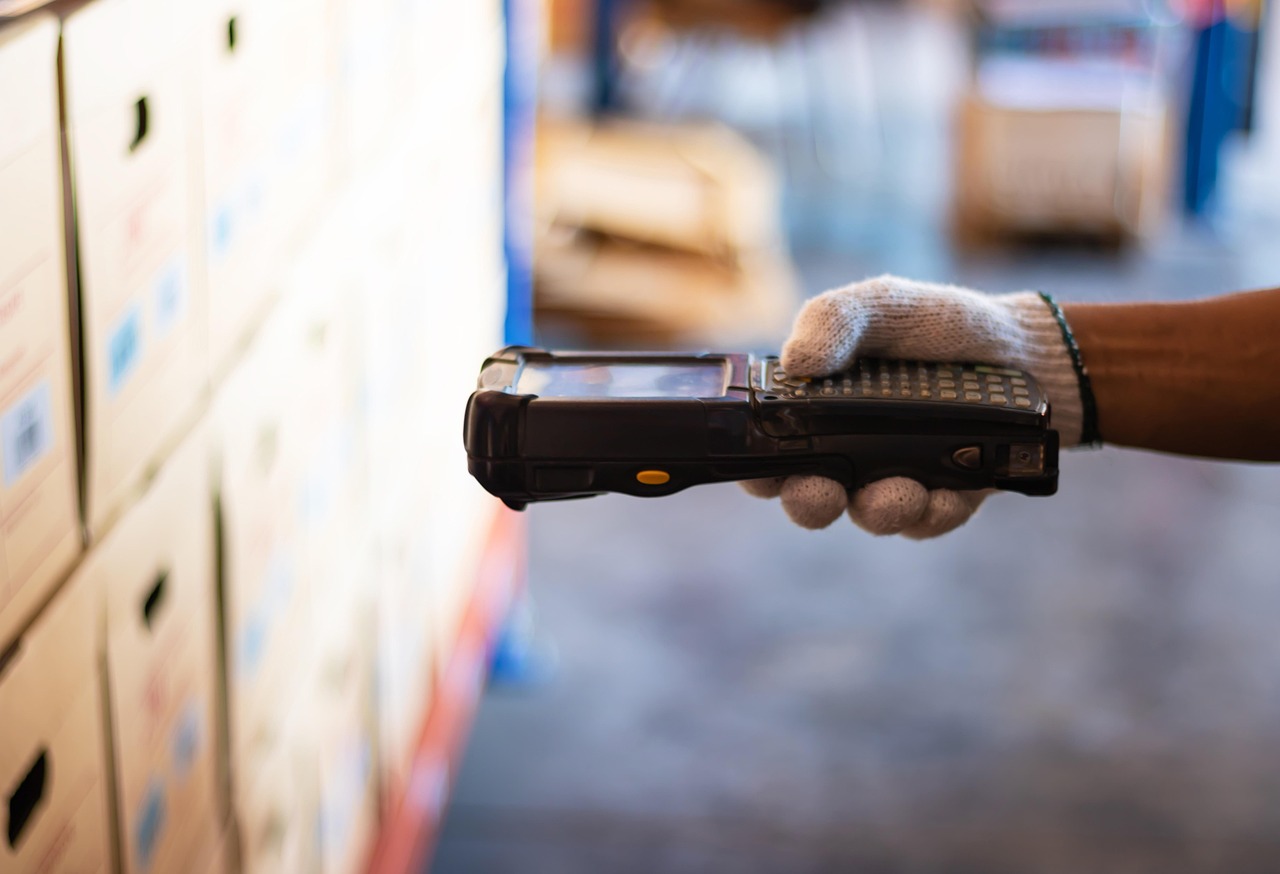Dropshipping Breakthrough: Finding Trending Products Before Your Competitors

You can spot trending products before anyone else. With the right tools, you get a head start. Dropship Spy and Google Trends help you track what’s hot by showing real-time data and market shifts. Social media gives you a peek at what people love right now. When you use these insights, you make smarter choices and boost your chances for a real Dropshipping Breakthrough. Jump in early, experiment, and watch your shop grow.
Key Takeaways
Find trending products early by using Google Trends, DropshipSpy, and social media. This helps you get ahead of others. Move quickly to make more money before too many people join in and prices fall. Know who your customers are and pick a niche that matches what they want. This helps you get loyal buyers. Check if people want your product by using surveys, samples, and small ads. This saves you time and money. Choose suppliers who are reliable and offer good quality, fast shipping, and clear messages. This keeps your customers happy. Use free marketing, paid ads, and work with influencers to show off your trending products. Do not follow every trend if it is too late. Focus on good timing, quality, and being different from others. Handle shipping well by testing suppliers and using technology. This makes sure orders arrive fast and are easy to track.
Dropshipping Breakthrough: Early Trend Advantage

Competitive Edge
You want your shop to stand out. Early trend discovery gives you that edge. When you spot a new product before others, you can offer it while demand is high and competition is low. This is the heart of a real Dropshipping Breakthrough. You get to lead the market, not just follow it. Many dropshippers jump on trends once they become obvious, but by then, the market is crowded. If you act fast, you can build your brand and attract loyal customers before others even notice the trend.
In dropshipping, the market moves quickly. You need to use data and tools to spot what’s coming next. For example, when remote work became popular, some dropshippers noticed a spike in searches for ergonomic office chairs. They stocked these products early and saw their sales soar. This shows how a Dropshipping Breakthrough can happen when you act on trends before they go mainstream.
Tip: Use Google Trends and social media to watch for rising products. The sooner you spot a trend, the bigger your advantage.
Profit Margins
Getting in early means you can set better prices. When you are one of the first to sell a trending product, you don’t have to lower your prices to compete. You can keep your profit margins healthy. As more shops join the trend, prices drop and profits shrink. Early trend adoption lets you enjoy higher margins before the market gets crowded.
Dropshipping Breakthrough is not just about finding products. It’s about timing. If you move fast, you can avoid the race to the bottom. You also get to test new products with less risk. If a trend fades, you can switch quickly without losing much money.
Brand Growth
Early trend adoption helps you grow your brand. When you bring new products to your audience first, they see you as a leader. You build trust and loyalty. Over time, this makes your brand stronger and more recognisable. Dropshipping Breakthrough is about more than quick wins. It’s about building a business that lasts.
You can also focus on niche markets. By serving a specific group, you face less competition and can meet their needs better. This helps you stand out and grow faster. Using automation and smart marketing, you can scale your shop and keep up with new trends. If you stay active on social media and keep your brand fresh, you will keep attracting new customers.
Trend Discovery Methods

Google Trends
Google Trends is your secret weapon for spotting what people want before everyone else. You can see what shoppers are searching for right now. This tool helps you make smart choices about which products to sell.
Search Analysis
You start by picking broad keywords. For example, if you want to sell home decor, you might look up “wall art” or “resin flower pots”. Google Trends shows you how popular these searches are over time. You can compare different keywords to see which one is growing faster. Try using the Compare feature to put “seedling trays” next to “camping gear” and spot the winner.
Here’s a simple way to use Google Trends for product research:
Begin with broad categories or subcategories. Use Google or AI tools to get ideas.
Narrow down your list by checking which keywords show steady growth.
Use the Compare tool to see which products are rising the fastest.
Look for different ways people search for the same thing. Try “standing desk” and “ergonomic desk” to catch all the trends.
Check if the trend is strong in your target country or region.
Match what you see on Google Trends with your own sales data. This helps you know if you’re ahead of the market.
Use tools like Glimpse for extra details, such as exact search numbers and growth rates.
Tip: Don’t trust every trend you see online. Some news stories can be misleading. Always double-check with Google Trends and your own shop data.
Many dropshippers have found success this way. For example, AliDropship experts used Google Trends to spot summer products like resin flower pots and camping gear. They picked these items because search interest was rising. Marc Chapon, a dropshipping entrepreneur, used Google Trends to find hot products and made over $10,000 in sales in one day. He matched trending searches with fast-shipping suppliers and kept his customers happy.
Seasonality
Some products only sell well at certain times of the year. Google Trends helps you spot these patterns. For example, you might see “Christmas jumpers” spike every December. If you plan ahead, you can launch your products right when demand is about to explode.
You can also use Google Trends to see where a trend is strongest. Maybe “camping gear” is huge in the UK in spring but not in winter. This helps you target your ads and stock the right products at the right time.
Social Media Monitoring

Social media is where trends are born. People share what they love, and products can go viral overnight. You need to keep an eye on platforms like TikTok, Instagram, Facebook, and Twitter (X) to spot what’s hot.
TikTok Trends
TikTok is a goldmine for new product ideas. Videos can make a product famous in just a few days. You can use tools like Sprout Social and Loomly to track which videos and hashtags are getting the most attention. These tools show you which products are trending, who is talking about them, and how fast they are growing.
Platforms like Sell The Trend offer a TikTok Viral Ads Explorer. This tool lets you see which ads and products are blowing up right now. You get AI-powered analytics, filters for niche products, and even a TikTok Ads Library. You can also use TickerTrends to track viral hashtags, see monthly view counts, and get alerts when something new starts trending.
Note: TikTok trends move fast. If you spot a product going viral, act quickly to add it to your shop.
Hashtag Tracking
Hashtags help you find what’s trending across all social platforms. Tools like BrandMentions and Mention let you track hashtags in real time. You can see which products people talk about the most and how they feel about them.
Here’s a table of top tools for social media monitoring:
Tool Name | Best For Platforms | Key Features |
|---|---|---|
Tweepsmap | Twitter (X) | Hashtag discovery, tweet breakdown, post scheduling |
BuzzSumo | Twitter, Facebook, YouTube, Pinterest, Reddit | Competitor monitoring, influencer tracking, content metrics |
Tailwind | Pinterest, Facebook, Instagram | Post scheduling, brand styles, best posting times |
BrandMentions | Instagram, Facebook, Twitter | Real-time mentions, hashtag analytics, sentiment alerts |
Mention | Instagram, Facebook, Twitter, Web | Trend analysis, mention alerts, editorial calendar |
You can see that Instagram, Facebook, Twitter, Pinterest, YouTube, and TikTok are the main places to watch for trends. Most monitoring tools cover several platforms at once, so you don’t miss anything.

Competitor Spy Tools
You don’t have to guess what works. Competitor spy tools show you what other dropshippers are selling and how well those products perform. You can spot winning products before the market gets crowded.
DropshipSpy
DropshipSpy gives you a list of trending products every day. You can see which items are selling fast and which shops are making the most sales. The tool also shows you how many stores already sell a product, so you can avoid saturated markets. DropshipSpy even lets you check Facebook ads for each product, so you can see what kind of marketing works best.
Track best-selling products in real time
See how many shops sell each item
Get marketing ideas from Facebook ads
Avoid products that are already everywhere
Sell The Trend

Sell The Trend takes things a step further. You get deep insights into product performance, sales data, and competition levels. The TikTok Viral Ads Explorer helps you find products that are just starting to trend. You can also use the AI Supplier Finder to source reliable suppliers quickly.
Discover products with high demand and low competition
Analyse sales data and spot new trends early
Use the TikTok Ads Library for marketing inspiration
Find trusted suppliers with one click
Pro Tip: Use both DropshipSpy and Sell The Trend together. You’ll get a full picture of what’s hot, what’s selling, and where you can jump in before everyone else.
With these tools, you can spot trends, check the competition, and launch winning products before the market gets crowded. Stay curious, keep testing, and you’ll always be one step ahead.
Automated Product Trackers
You want to find viral products before others do. Automated product trackers help you do this. These smart tools use artificial intelligence to check thousands of products. They track sales and show you what is trending now. You do not need to guess or search for hours. The tracker does the hard work for you.
Automated trackers like Dropship Spy give you confidence scores. They also show real-time engagement data. You can see which products get attention on social media. You can also see which ones have a strong sales history. This helps you make choices using facts, not just guesses. Many dropshippers say TikTok analytics from these tools are correct and current. This helps them spot trends before they become too popular.
You save a lot of time as well. Tools like Jungle Scout, Niche Scraper, Doba, and Sell The Trend have many features. They give you sales data, product trend analysis, and supplier lists. You get all you need in one place. Automation helps you manage sourcing, inventory, and orders without doing it by hand. If you use platforms with Zapier, you can sync data and automate your work even more. Solo founders and small teams find this very helpful. It lets them grow their shops quickly.
Dropshipping experts in 2024 suggest Dropship.IO for spying on competitors and tracking products. You can watch your rivals’ sales, products, and revenue. The tool even has a free trial, so you can try it before you pay.
Here’s a quick look at some top automated product trackers:
Tool | Key Features | Pricing Range | User Ratings |
|---|---|---|---|
DSers | Bulk order processing, tracking updates, supports Shopify & WooCommerce | Free to £399/month | ⭐⭐⭐⭐⭐ (Shopify App Store, G2) |
WooDropship | WooCommerce integration, AliExpress automation, product & order management | Free plan, £11.99/month for 100 orders | ⭐⭐⭐⭐ (Trustpilot), ⭐⭐⭐ (Sitejabber) |
Spark Shipping | Multi-vendor/platform support, end-to-end automation, tracking from UPS/FedEx | £199 to £799/month | ⭐⭐⭐⭐ (Shopify App Store), ⭐⭐⭐⭐⭐ (Capterra) |
Tip: Try a few different trackers to see which one works best for your shop. Most have free trials or starter plans.
Automated product trackers change how you run your dropshipping business. You get instant market trends, social proof, and sales data. You can find winning products, check the competition, and test ideas with real numbers. This helps you stay ahead and react fast when customers want something new. If you want to keep winning, automation is your secret tool.
Audience and Niche Focus

Target Audience
You want your shop to attract the right people. Understanding your target audience makes this much easier. When you know what your customers like, what problems they face, and how they shop, you can pick products that fit their needs. You also create marketing that speaks directly to them.
You learn about your audience’s preferences and pain points by listening to their questions and feedback.
Watching your sales data helps you spot what your customers buy most often.
Analysing your competitors shows you which products and ads work best in your market.
Social media listening on TikTok and Instagram reveals what’s trending and how people use new products.
Tools like Google Trends help you see what shoppers are searching for right now.
If you pay attention to these signals, you can spot trends early and launch products that your audience actually wants. This boosts your chances of success and keeps your shop ahead of the curve.
Niche Selection
Choosing the right niche is one of the most important steps in dropshipping. A good niche helps you stand out and makes it easier to find winning products. You want a niche that is not too broad, but not too small either.
Segment your audience by age, gender, income, or location to find groups with special needs.
Use surveys to learn what different groups want and what problems they need solved.
Demographic segmentation helps you spot gaps in the market and find new opportunities.
When you pick a niche, look for these things:
Products that cost £12 or less. These are easy for people to buy on impulse.
Items with at least 15 sales in the last month. This shows real demand.
A high sell-through rate, like 1000% or more. This means products sell quickly.
Use keyword research to see what people are searching for.
Check the competition. You want a niche with some demand, but not too many sellers.
Use tools like ZIK Analytics and Google Trends to confirm your ideas.
Make sure you can earn a good profit.
Try AI-powered tools to speed up your research.
Tip: The right niche lets you focus your marketing and build a loyal customer base.
Product Categories

Some product categories grow faster than others. If you want to catch a trend, look at what is rising now. Here’s a table of categories that have seen big growth in dropshipping over the past year:
Product Category | Growth Description | Examples of Trending Products or Features |
|---|---|---|
Candles | Exponential growth; low risk and easy to adapt. | Soy candles, Scented candles, Birthday candles, Beeswax candles, LED candles |
Home Improvement | Demand rising fast; industry worth over £1 billion by 2027. | Rug pad grippers, Water filters, Bathroom vanity lights, Wireless security cameras, Smart video doorbells |
Pet Products | Huge market; pet owners always need new items. | Biodegradable dog poop bags, Paw cleaner, Leak proof pee pads, Pet security cameras, Double door pet crates |
Beauty Care & Health | Many suppliers and lots of variety; great for bundles. | Facial beauty rollers, Makeup brush sets, Neck massagers, Electronic teeth whiteners, IPL laser epilators |
Phone Accessories | Always in demand; lots of new gadgets and upgrades. | Desk phone stands, Cellphone ring holders, Phone tripods & selfie sticks, Car cellphone holders, Universal cellphone lanyards |
Patio, Lawn & Garden | Profitable and popular for outdoor lovers. | Lawn chairs, Large patio umbrellas, Sun shade sails, Outdoor privacy screens, Metal wind chimes |
You can use these categories as a starting point. Watch for new trends in each one. If you match the right product to the right audience, you set yourself up for dropshipping success.
Product Validation and Sourcing

Demand Testing
You need to know if a product will sell before spending money. Testing demand helps you avoid wasting time and cash. Here are some easy ways to check if people want your product: 1. Ask your customers what they like or need with surveys. 2. Order a sample for yourself. This lets you see the quality and how the supplier talks to you. 3. Try A/B testing by making two product pages. See which one gets more clicks or sales. 4. Start a pre-order campaign. This shows if people want your product before you buy lots of stock. 5. Get an agent if you need help with testing or talking to suppliers. 6. Give free samples to a few customers. Ask them for honest feedback and reviews.
You can also watch how people act on social media. Look at comments, likes, and shares on similar products. Invite a small group of customers to try your product and tell you what they think. These steps help you find good products and avoid ones that do not sell.
Tip: Always get feedback from real shoppers. Their opinions show you what works and what needs fixing.
Supplier Selection
Picking the right supplier is very important. You want someone who is reliable, quick, and easy to work with. Here is a table to help you spot a good supplier:
Key Indicator | What to Look For |
|---|---|
Product Quality | Good items that make customers happy and protect your brand. |
Shipping Speed | Fast delivery, especially from local suppliers, for a better customer experience. |
Order Processing Time | Quick turnaround, so orders reach your customers sooner. |
Pricing | Fair prices that let you make a profit. |
Customer Service | Helpful support, clear info, and easy refunds. |
Product Range | A wide choice so you can try new trends and bundles. |
Integration Capabilities | Easy connection with your shop for automatic updates and order handling. |
Custom Packaging | Options for branded packaging to boost your shop’s image. |
Supplier Location | Closer suppliers mean faster shipping and easier returns. |
Positive Reviews | Good feedback from other dropshippers builds trust. |
Return & Payment Policies | Clear, fair rules that keep customers coming back. |
Always read reviews and test the supplier with a small order first. This helps you avoid problems later.
Quality Assurance

You want your customers to be happy with what they buy. Good quality makes them come back again. Top dropshipping shops use smart ways to make sure products are good: - Pick suppliers with a good name and lots of positive reviews. - Test products yourself before selling them in your shop. - Choose suppliers who send orders quickly and ship fast. - Stay away from deals that are too cheap. Cheap prices often mean bad quality. - Talk to your supplier often. Good communication helps you fix problems quickly.
Here is how some well-known suppliers check quality:
Supplier | How They Ensure Quality | Extra Benefits |
|---|---|---|
Costway | Checks products carefully and gives a 3-month warranty | Wholesale prices, fast shipping |
Costco | High standards and a 90-day return policy | Great support, quick delivery |
Shopify | Only lists trusted and trending suppliers | Saves you time on research |
AutoDS | Checks warehouses and does quality checks | Faster shipping, cost savings |
Note: Always ask your supplier about their quality checks and return rules. This keeps your shop safe and your customers happy.
Marketing for Trending Products
Organic Channels
You can build excitement for your trending products without spending money on ads. Organic marketing channels help you reach people in a natural way. Social media is a great place to start. Share eye-catching photos and videos on TikTok, Instagram, and Facebook. Use branded hashtags to encourage your customers to post their own photos. This user-generated content acts as real proof that your products work.
You can also join community groups on Facebook or Reddit. Answer questions, share tips, and become a helpful voice. People trust brands that give value before selling. Blog posts work well too. Write simple guides or how-to articles about your products. This helps your shop show up in Google searches.
Here’s a quick look at some top organic channels and their benefits:
Organic Channel | Key Tactics | Benefits |
|---|---|---|
User-Generated Content | Run contests, use branded hashtags | Builds trust and social proof |
Social Media Platforms | Post regularly, use platform trends | Increases reach and engagement |
Community Groups | Join groups, offer advice | Builds credibility and market insights |
Content Marketing | Write blogs, share tips | Boosts SEO and attracts new visitors |
Affiliate Marketing | Partner with bloggers and websites | Drives word-of-mouth sales |
Tip: Most shoppers trust reviews and real customer photos more than ads. Encourage your buyers to share their experiences.
Paid Ads

Paid ads help you reach more people fast. You can use platforms like TikTok, Facebook, and Instagram to show your products to shoppers who are ready to buy. When you sell trending products, you often see profit margins between 20% and 40%. Remember to factor in platform fees and ad costs. If you want to keep your profits healthy, you need to watch your ad spend closely.
A good rule is to aim for a Return on Ad Spend (ROAS) of at least 3:1. This means for every £1 you spend on ads, you should make at least £3 in sales. Beginners often see lower profits at first, but as you learn, your results improve. Here’s a simple table to show how profits can look:
Experience Level | Monthly Sales (£) | Costs (£) | Net Profit (£) |
|---|---|---|---|
Beginner | 4,000 | 2,400 | 1,200 |
Intermediate | 20,000 | 14,400 | 4,800 |
Keep testing your ads. Try different images, videos, and headlines. Watch which ones get the most clicks and sales. Adjust your budget to focus on what works best.
Influencer Marketing
Influencer marketing can give your shop a real boost. Influencers share your products with their followers in a way that feels honest and personal. Their stories and reviews make people trust your brand. You reach the right audience because influencers often have followers who match your target market.
Here’s how influencers help you sell more:
They share real experiences, making your products feel trustworthy.
Their followers see your products and want to try them too.
Influencers create fun and creative posts that grab attention.
When influencers talk about your shop often, their fans become loyal customers.
You can work with big influencers or choose micro-influencers for smaller, more engaged groups. Always check how well their posts perform. Look at likes, comments, and sales. Use tools like Google Analytics to track what works. Pick influencers who fit your brand and values. This way, you build trust and keep your reputation strong.
Note: Influencer marketing works best when you let influencers be creative and honest. Their followers will notice if a post feels fake, so always aim for real stories and genuine excitement.
Common Pitfalls

Trend Reliance
Chasing every new trend can feel exciting, but it often leads to trouble. If you jump on a trend too late, you might end up with products that no one wants anymore. You waste time and money on items that are already losing popularity. Sometimes, you pick products just because everyone else is selling them. This makes it hard for your shop to stand out. You also risk entering a market that is already crowded, which means you have to fight for every sale.
Here’s a quick look at some common problems when you rely too much on trends:
Pitfall | Explanation |
|---|---|
Poor Timing in Demand Planning | You miss the peak and get stuck with slow-moving stock. |
Ineffective Product Selection | You pick generic products that blend in with the crowd. |
Supplier Reliability Issues | You trust new suppliers without checking their track record. |
Market Saturation | You enter a niche with too many sellers and not enough buyers. |
Thin Margins | You lower prices to compete, which cuts into your profits. |
You need to plan carefully and do your research before adding a new product. Always check if the trend is still rising or if it has already peaked. Focus on what makes your shop different. This helps you avoid the trap of selling the same thing as everyone else.
Tip: Keep an eye on your demand planning. If you act too late, you might waste effort on products that are already fading.
Quality Issues

Quality problems can ruin your shop’s reputation fast. When you rely on outside suppliers, you have less control over what your customers receive. Sometimes, products arrive late or have defects. This leads to unhappy customers and lost trust. If you ignore these problems, people will not come back to your shop.
Shipping delays and faulty products are common when you do not check your suppliers.
Customers lose trust if they get poor-quality items.
Most shoppers will give you another chance if you fix their problem quickly and show you care.
If you solve issues well, customers might even become more loyal than before.
Collect feedback from your buyers. Use it to spot problems and switch suppliers if needed.
One tech shop cut returns by 40% after changing suppliers based on customer complaints.
Let your customers know when you make improvements. If you announce upgrades or better quality, people feel more confident buying from you.
Slow Response

You need to move fast in dropshipping. Trends change quickly, and so do customer needs. If you wait too long to add new products or fix problems, you lose sales to faster shops. Social media can help you spot what’s hot right now. Use the right platforms for your audience and post about new arrivals to create excitement.
Work with influencers who match your niche. Their followers trust their opinions and can help you reach new buyers quickly.
Update your product photos and descriptions to stand out. Use high-quality images and clear, catchy words.
Offer limited-time deals to create urgency. Make sure you tell customers how long the offer lasts.
Write helpful blog posts about your products and trends. This builds trust and keeps your shop top of mind.
If you respond quickly to changes and customer feedback, you stay ahead of the competition. Your shop becomes known for being fresh and reliable, which keeps people coming back.
Logistics

Logistics can make or break your dropshipping shop. You might find a trending product and get lots of orders, but if you cannot deliver on time, customers will not come back. Many dropshippers face logistics headaches as their shops grow. You need to know what can go wrong and how to fix it.
You do not control your own stock in dropshipping. Your suppliers handle inventory and shipping. This setup sounds easy, but it brings many risks:
Suppliers sometimes run out of stock without warning. You might sell a product that is no longer available.
Shipping times can change from one order to the next. Some customers get their items quickly, while others wait weeks.
Tracking orders becomes tricky when you work with many suppliers. You might not know where a package is or when it will arrive.
Returns and exchanges take longer because you must talk to your supplier first. Customers get frustrated if they wait too long for a refund or replacement.
Shipping costs can jump if your suppliers are in different countries. This eats into your profits and can scare off buyers.
You also face problems with inventory accuracy. If your supplier’s system does not update in real time, you risk selling products that are already out of stock. This leads to cancelled orders and unhappy customers. When you cannot see your inventory, you might oversell or miss out on sales.
Here’s a quick table to show common logistics challenges and their effects:
Logistics Challenge | Impact on Your Shop |
|---|---|
Stockouts | Lost sales, angry customers |
Slow shipping | Bad reviews, fewer repeat buyers |
High shipping costs | Lower profits, fewer conversions |
Poor order tracking | More support requests, lost trust |
Complicated returns | Delays, negative feedback |
You can use technology to help. Supplier integration software and real-time inventory tools make things smoother. These tools let you see what is in stock and track orders better. But you still depend on your suppliers to keep their systems updated.
Tip: Always test your suppliers before you scale up. Place a few orders yourself. Check how fast they ship and how they handle problems. Good communication with your suppliers makes a big difference.
If you want to grow your shop, you must solve logistics problems early. Stay organised, use the right tools, and work with reliable suppliers. This way, you keep your customers happy and your business running smoothly.
You can have a real Dropshipping Breakthrough if you move quickly and use clever tools. Try out different ways to find new products and always watch what is happening in the market. Here are some tips from shops that do well:
Make your shop easy to use and show clear pictures of your products.
Tell the truth about how long shipping takes and how returns work.
Set good prices and offer lots of different products.
Work hard on your marketing and pick suppliers you can trust.
Keep learning, try new things, and talk about what you do. Sign up for more advice and join in with others!
FAQ
What is dropshipping?
You sell products online without keeping stock. Your supplier ships items straight to your customer. You focus on marketing and customer service. Dropshipping lets you start a shop with less money and less risk.
How do I spot a trending product early?
You watch Google Trends and social media. You use tools like DropshipSpy. You look for products with rising searches and lots of buzz. You act fast when you see something new getting popular.
Which social media platform is best for finding trends?
TikTok moves fastest. You see new products go viral every week. Instagram and Facebook also help you spot what people love. You check hashtags and follow influencers for fresh ideas.
How do I test if a product will sell?
You run a small ad campaign. You ask your audience for feedback. You offer pre-orders or samples. You watch how people react and buy. You use this data to decide if you should stock the product.
What should I look for in a supplier?
You want fast shipping, good reviews, and clear communication. You check their product quality. You ask about return policies. You test with a small order first. Reliable suppliers help you keep customers happy.
Can I automate my dropshipping business?
Yes, you can. You use automated product trackers and order management tools. You connect your shop with suppliers. Automation saves you time and helps you scale your business faster.
How do I avoid common dropshipping mistakes?
You research trends before you buy. You test products and suppliers. You respond quickly to changes. You keep your logistics organised. You listen to customer feedback and improve your shop.
Tip: Stay curious and keep learning. Dropshipping works best when you adapt and try new things.

TangBuy: A Smarter Way to Dropship in 2025
If you're looking to stay competitive with dropshipping in 2025, speed and trend-awareness are key. TangBuy helps you stay ahead with real-time product trends, fast fulfilment, and factory-direct sourcing. With over 1 million ready-to-ship items, 24-hour order processing, and seamless Shopify integration, TangBuy makes it easier to test, scale, and succeed in today's fast-moving eCommerce landscape.
See Also
Five Effective Ways To Find Trending Items For Your Store
Profitable Dropshipping Concepts To Earn Income In 2025
Best Dropshipping Markets To Target For 2025 Profits
Hot Selling Items To Maximise Earnings In 2025
Most Popular Hoodies Offering Great Margins For Dropshipping
